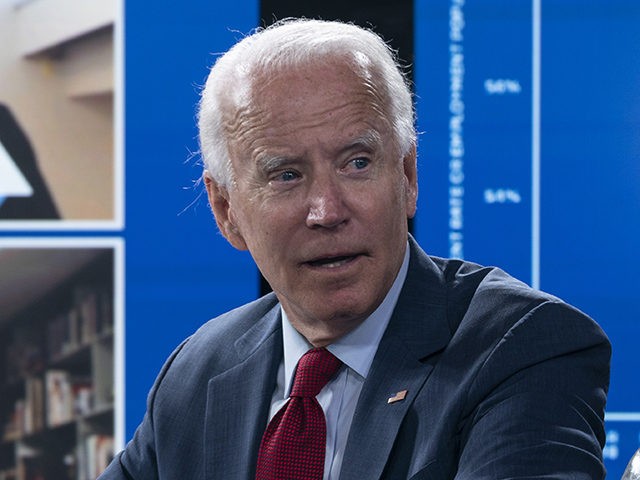Joe Biden’s (D) national lead is narrowing as the presidential race draws closer, as he loses the double-digit lead he once held in late June.
The Monmouth University Poll, fielded September 24-27 among 809 registered voters in the United States, shows Biden holding a six-point advantage, leading the president 50 percent to 44 percent.
Two percent support libertarian candidate Jo Jorgensen, one percent support Green Party candidate Howie Hawkins, and one percent chose another candidate. Another two percent remain undecided, the survey found.
In late June, Biden held a double-digit advantage, besting Trump 52 percent to 39 percent. His lead reduced to ten points in August (51 percent to 41 percent) and nine percent in early September (51 percent to 42 percent).
Biden’s lead narrows even further among likely voters, 50 percent to 45 percent, down from a seven-point advantage the former vice president held earlier in the month.
Trump enjoys a slight advantage among independent voters, specifically, leading his challenger 43 percent to 41 percent. He also has an edge in key swing counties, as Monmouth reported:
Geographically, Biden has also lost his advantage among voters living in swing counties – the counties where either Trump or Hillary Clinton won the vote by less than 10 points in 2016. Voter preferences in these counties now stands at 47% Trump and 46% Biden, whereas the challenger held a 47% to 40% edge earlier this month. Other demographic trends are fairly stable.
Biden’s firm support remains stable – 43% of all registered voters and 44% of likely voters are certain to vote for him. In early September, these numbers were 43% and 45%, respectively. Trump’s firm support stands at 40% of registered and 42% of likely voters now versus 37% and 41% earlier in the month. On the flip side, about half of the electorate (49% registered and 49% likely) are not at all likely to support the incumbent, which has been extremely stable since the summer. Fewer voters (44% registered and 45% likely) reject the challenger outright, but this sentiment has ticked up since early September (40% registered and 42% likely).
“Half the national electorate has been dead set against reelecting the president all along. But that does not mean they have completely gotten behind the challenger, particularly in the most competitive areas of the country,” Patrick Murray, director of the independent Monmouth University Polling Institute, said.
Nearly three-quarters of Americans, 74 percent, said they will watch the first presidential debate on Tuesday but very few, three percent, indicated that the debate will help them make their final decision.
“How likely is it that the debate will [change/help you make up] your mind about which candidate you intend to support – very likely, somewhat likely, or not likely?” the survey asked.
Only three percent said “very likely,” followed by 10 percent who said “somewhat likely” and 87 percent who said it is “not likely.”
“There was more volatility in the electorate in 2016 than there is today. But these results underscore the fact that the audience for these debates are voters who already have a rooting interest in one side or the other,” Murray said, adding that the “media framing after the fact is more important for potentially moving the small group of persuadable voters who remain.”
The survey’s margin of error is +/- 3.5 percent.

COMMENTS
Please let us know if you're having issues with commenting.